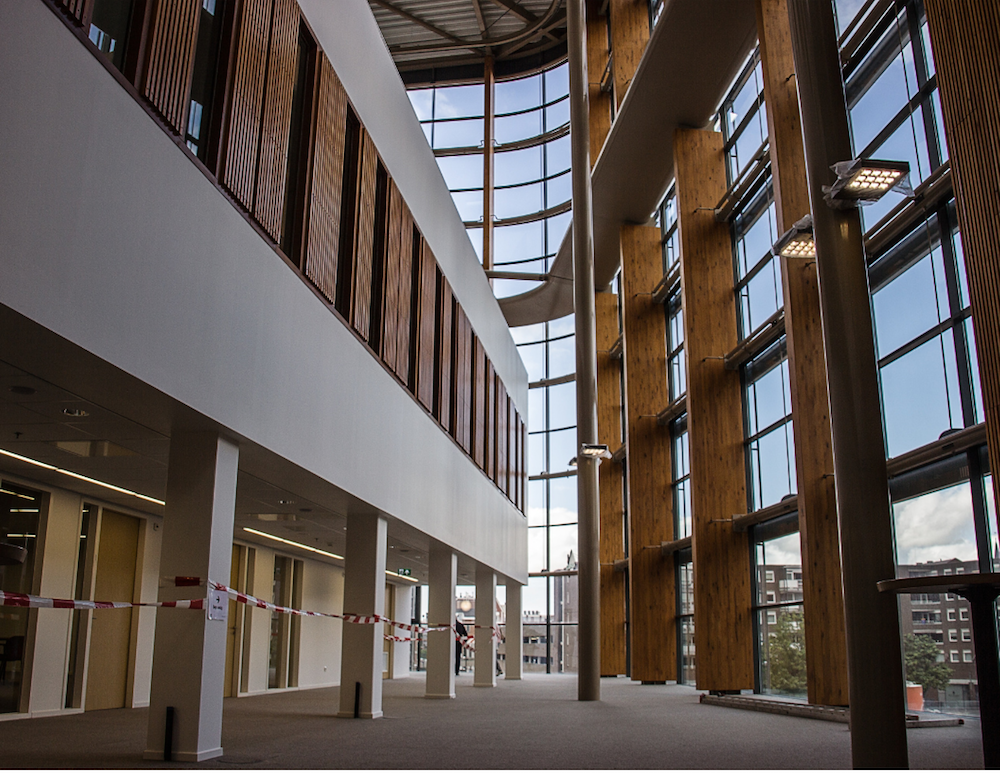Brian Haines explores five workplace metrics that will be key to determining which real estate measurements will achieve desirable and sustainable long-term outcomes.

According to JLL, 70 percent of workplace metrics that companies track in the next three years will be non-traditional, and there may be no area more greatly affected by these sudden changes than the physical workplace.
That’s because it’s not just that the way people work – or where they work – that will influence the way companies operate moving forward. Just as important will be how they analyze their own investments and the way their staff interact with that space.
Historically, companies have understood real estate performance through the lens of operational efficiency, measured by total operating costs and cost per square foot. But with the emergence of hybrid work, old equations for measuring the optimal value of a square foot change.
Let’s explore five workplace metrics that will be key to determining which real estate measurements will achieve desirable and sustainable long-term outcomes.
1. Predictive Capacity
Before the pandemic, our internal data showed that offices had already dropped below 40 percent utilization on average. We now expect that more than 30 percent of staff may work remotely full-time after the pandemic (vs. three percent previously), and that most will operate in a hybrid role. Taken together, the pressure to address under-utilization is incredible.
While the office will continue to play an irreplaceable role as a place to dream, build, collaborate and socialize – or just get out of the house for a few hours – organizations will have to think hard about how to optimize existing space. With many reports consistently revealing workers are missing in-person meetings and opportunities to socialize with colleagues face-to-face, focusing on collaborative workspaces is a way to do that. Even so, it’ll be easy to overspend or misallocate real estate investments if accurate estimations of true space requirements aren’t available.
That’s why companies must position actual utilization as the primary method for measuring real estate performance. They must be really specific about the percentage of space that supports its primary function: collaboration.
To do so, they’ll need to identify, track and predict the precise number of people who use the office on a day-to-day basis (not necessarily who they are or how often they come in), and how much space they need to foster the maximum amount of collaboration and productivity. This is especially important as traditional long-term office leases end and new negotiations begin.

2. Congestion – or “De-densification”
Before the pandemic, one key workplace metric companies used to optimize their floor space was densification. Densification focuses on maximization of space utilization, which intends to squeeze the largest number of people into a given space on a given day, rather than provide a space for everyone every day.
Open floor plans were commonplace. The fading role of assigned seating and cubicles made sense; dense open plans provided flexibility and better use of square footage as they recognized that not all employees were in the office at the same time every day due to vacation, work travel, illness, etc.
But the pandemic flipped this on its head. Now, companies are measuring congestion instead. They need to know how many people can safely function inside a facility, on a specific floor or even area while maintaining social distancing. This will likely happen for a while until people feel comfortable, even after the pandemic is over or as more people are vaccinated.
Finding the right balance of densification to maximize value and congestion to maximize safety and willingness to return to work will be critical in the coming months and even years.

3. Health and Wellness
Productivity used to be measured in large part by physical presence in the office. Managers wanted to see their teams – if they weren’t there they weren’t working. That’s naturally changed now as flexibility and trust reign supreme. But that doesn’t mean presenteeism is a useless workplace metric. The definition has merely changed.
There is a tremendous amount of cost savings – both in terms of productivity and health care costs – in ensuring a healthy and working workforce. In fact, according to a recent study from the Integrated Benefits Institute (IBI), every dollar spent on health care benefits, another $0.61 is spent on illness-related absence, disability, and reduced work output costing US employers $575 billion and 1.5 billion days of lost productivity. The combination of more remote workers and offices being reconfigured for reduced capacity and social distancing means the chance of any one employee introducing an illness to the greater team is drastically reduced.
By emphasizing indoor air quality and sanitization of workspaces, people are simply not going to get sick as often. When it comes to sanitization, it also helps to know where people actually go, where they tend to gather and who they have been in close contact with. By tracking this data, companies can create more effective sanitization procedures and take proactive steps to slow the spread of illnesses when they inevitably enter the office.
4. Physical Asset Location and Lifespan
An organization’s physical assets are nearly always a large and costly financial investment, but beyond the scope of the office itself, most companies don’t have systems in place to track and manage them effectively.
Metrics like expected technology lifespan help companies understand when it’s time to replace their enterprise and employee technology. Unfortunately, this becomes both more important and more challenging in a hybrid work environment. Not only do they need to know when end of life for each asset is drawing near, they need to ensure they know where their assets are (in office or at home), how many of each asset an employee has (e.g. if they have a company-owned monitor in the office and at home), and how to upgrade each before it breaks, dies or becomes obsolete.
To address this, organizations are starting to rely on centralized web-based facilities asset management systems to link physical assets to owners, track locations, and access product information including warranties and depreciation values. By automatically tracking asset acquisition costs, asset depreciation and lifecycle costs, it becomes possible to eliminate costly surprises, and fully understand – and then optimize for – the true financial impacts of your asset portfolio.

5. Sustainable resource ROI
Finally, finding the balance between affordability and sustainability of resources is rapidly becoming increasingly important and appreciated as both an ethical and financial requirement.
First, a company must understand the operational, day-to-day costs of keeping the building open, including utilities, cleaning supplies, paper and more. But before a company can invest in high-efficiency HVAC or recycled paper towels, it needs to evaluate both the building’s current environmental and financial impacts and be able to forecast the value of those prospective sustainability projects.
The workplace metrics that matter here include the net present value, internal rate of return, short-and long-term ROI and payback period, as well as overall environmental impacts as determined by building assessments and certifications and using energy rating systems.
Healthy and Collaborative Workplaces Are Built on Great Data
Moving forward, there must be a strong emphasis on measuring how the workplace is actually used in support of teamwork, collaboration, culture, and wellness. If you are planning to reopen your office or offices and bring workers back, you need technology and data to plan the return. It’ll require careful planning to ensure the workplace meets the needs of both employees and the organization, but done right, the workplace of the future will be an improvement on the systems of old.

